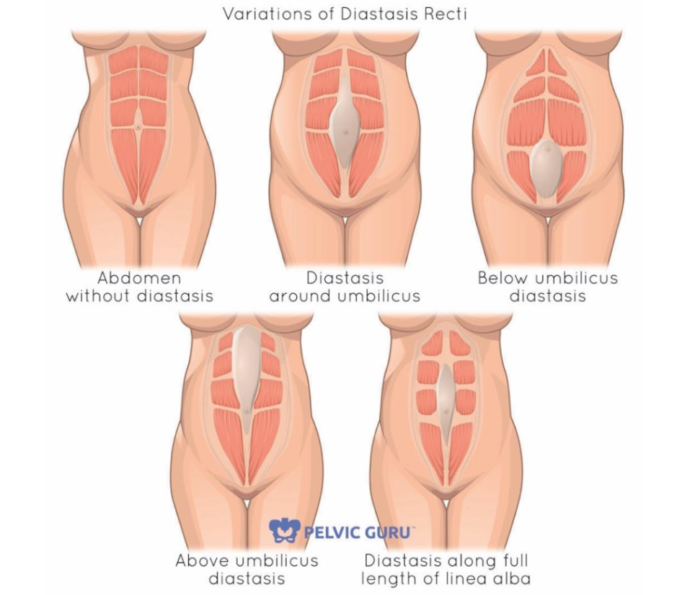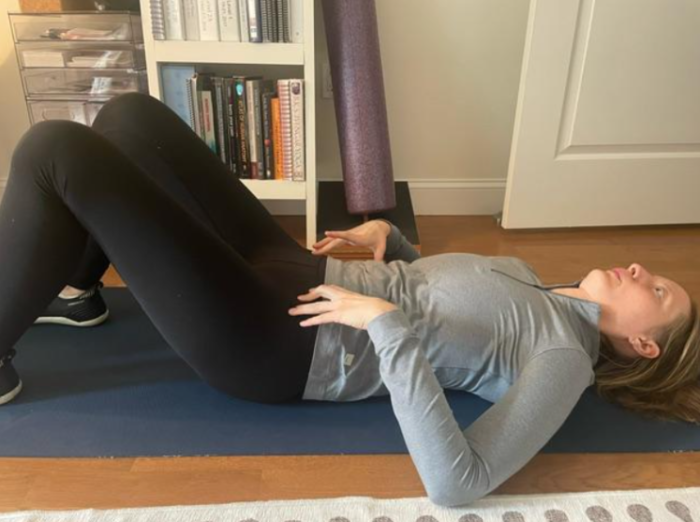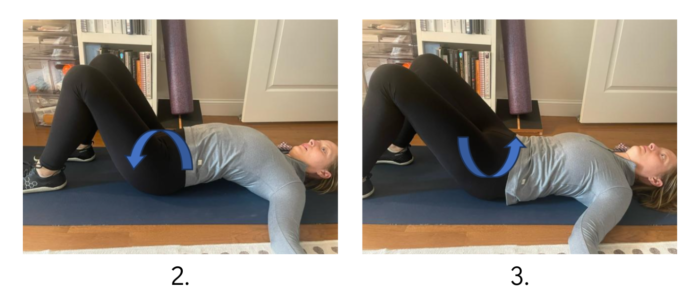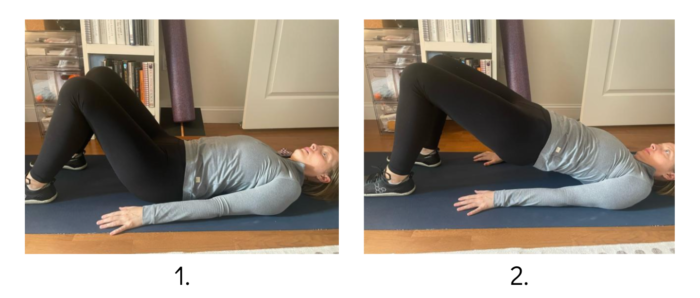Dr. Annie Neisen, DPT, PT
Board Certified Women’s Health Specialist
Certified Holistic Sex Educator
What is an abdominal separation or diastasis recti abdominis (DRA)?
A DRA occurs when there is a widening of the connective tissue between the two rectus abdominis muscles (the 6-pack abs). This tissue is called the linea alba, and it is attached to the medial sides of the rectus abdominis muscles. The separation can occur above, at the level of or below the belly button. DRA is common during and following pregnancy. It can also occur in overweight individuals, when using poor lifting techniques of heavy weights, and even after some abdominal surgeries.

How do I know if I have a DRA?
Some stretching of the linea alba is normal and common with pregnancy. Often this improves in the postpartum period, however, sometimes the gap does not improve and can become problematic. This can contribute to weakness of the abdominal muscles, pain of the back or sacrum, and contribute to a variety of pelvic floor symptoms including urinary leakage, prolapse, or pain with intercourse. A DRA can be visually upsetting for many individuals, as often there is visible gap or bulge down the middle of the abdomen and can sometimes be described a “pooch”.
A quick way to self-assess for a DRA is to do a mini crunch and see if you notice any bulging or separation of the abdominal muscles. On some individuals, there may be a sinking-in at the separation as opposed to a bulge.
I’ve been told or suspect I have a DRA, what do I do?
If you have been told or suspect you have a DRA, meeting with a pelvic floor physical therapist or a physical therapist with experience treating prenatal/postpartum patients for a thorough assessment would be the first step. They can guide you on specific treatments and exercises to help improve the DRA and symptoms, and make sure you are performing exercises appropriately so that the DRA doesn’t worsen. In larger separations that have not improved with therapy, there are surgical options.
Important aspects of the physical therapy treatment can include:
- Posture
- Appropriate core, pelvic floor and hip exercises
- Breathing mechanics
- Pelvic floor muscle assessment/treatment
Steps I can start taking at home?
1. Avoid Belly Binders:
- I’m not a fan of belly binding because it can increase pressure on the pelvic floor and contribute to pelvic floor muscle weakness, prolapse and urinary leakage. It can also limit the mobility of the diaphragm with breathing. If you feel you need some extra support postpartum, support bloomers are great and can be helpful, while also giving some support to your pelvic floor.
2. Use proper lifting mechanics:
- It is really important to not hold your breath or do a Valsalva maneuver while lifting or performing exercises. This can increase intra-abdominal pressure and make a separation worse. Make sure to squat down, instead of bending over, to lift heavier objects.
3. Avoid straining with urination or bowel movement:
- Besides not being great for your pelvic floor, straining can increase intraabdominal pressure and often can lead to doing a Valsalva. Make sure to drink plenty of water, get 25+ grams of fiber a day, and take a stool softener if needed.
4. Exercises:
- While it’s important to be assessed by a trained therapist or trainer, some gentle exercises you can start doing at home around 2 weeks postpartum, or any time after 2 weeks are below. None of these should be painful or increase any separation or bulging in the abdomen.
Exercises
#1: Diaphragmatic breathing with abdominal activation
- Begin by lying on your back with knees bent and feet on the floor.
- Inhale gently through your nose deep into your belly for about 4-5 seconds. Let the belly really expand here.
- On the exhale, gently pull your belly button towards your spine without flattening your back against the floor. Make sure you are also pulling in low ribs to avoid any rib flaring.
- Repeat this 10-20 times a day.

#2: Pelvic tilting
- Lay on your back with knees bent and feet on the floor, with arms at your side
- Inhale, move your tailbone back to arch your low back
- Exhale, tuck your tailbone to flatten your back to the floor

#3: Bridging
- Lay on your back with knees bent and feet on the floor, with arms at your side
- Exhale, lift your butt/hips up slowly
- Inhale, slowly lower your butt to the floor
- Repeat 10 times x 2 sets daily

While having a DRA can be upsetting, there are many options to help improve the appearance of the separation, improve your core strength and other symptoms associated with a DRA. Please note, some minor separation is a normal part of pregnancy, but it should not be affecting your day-to-day life.
If you would like to learn more, please reach out at annie@harmoniapt.com with questions or follow me on Instagram @harmoniaphysio for more tips. Go to www.harmoniapt.com to schedule an appointment or a complimentary 15 min phone call.

